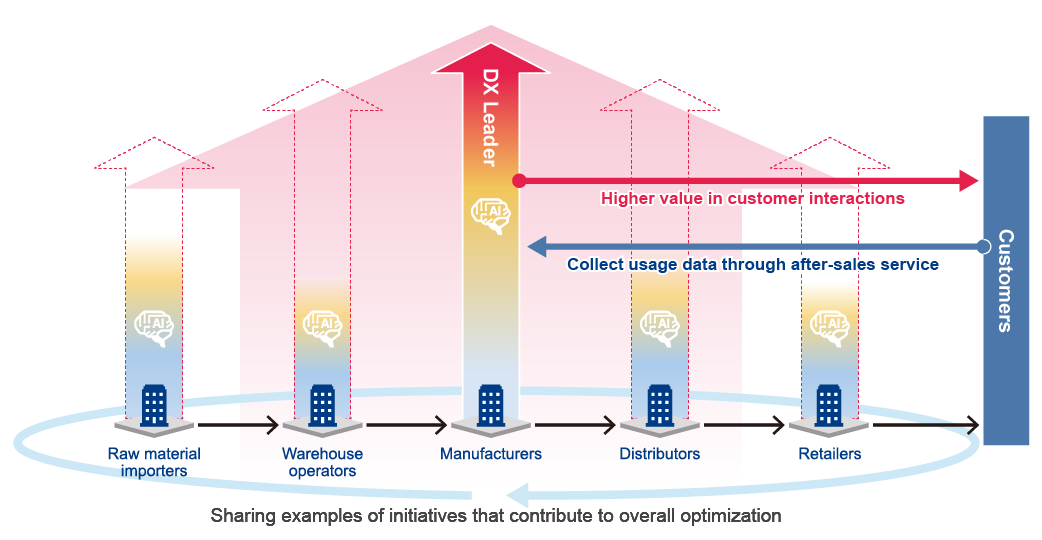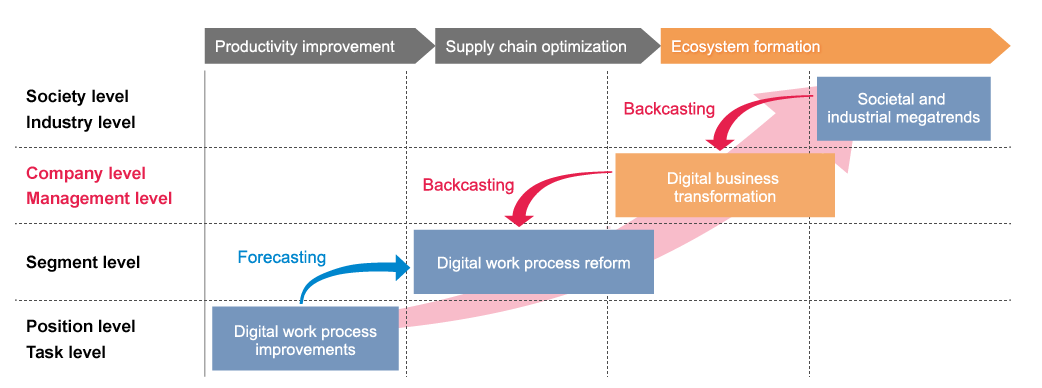To draw up a grand design for DX, executives need begin by establishing a vantage point; they need to conceptualize, taking into consideration long-term societal and industrial megatrends, the ideal future for their company. This must include both the envisioning of work process reforms and the formulation of growth strategies for new businesses. Executives may find it helpful to imagine: how companies will collaborate using digital technologies, how interaction with customers could change, and what value will be offered to customers. The benefits of DX are enjoyed more by the whole supply chain than by individual companies. Digital business transformation has the potential to change the structure of an industrial sector and even that of entire industries.
The first step for a company as a whole is to define its digital business transformation in terms of its projected digitally-transformed state. Next, a backcasting process must be used to identify and analyze the differences between the company’s current state and its future digitally-transformed state, with goals for digital work process reforms to be set based on these findings. The focus needs to be on promoting data-driven initiatives, supplementing real-world business activities with digital technology. More specifically, the objective data generated through operations can be utilized in decision-making to enhance profitability and competitiveness of core businesses.
The company must also use its future digitally-transformed state to develop new businesses that fortify existing strengths. It is common for large corporations to lose their positioning despite leading the very innovations behind the formation of new markets, and organizational productivity must be improved in tandem with other initiatives by digitalizing decision-making processes. Companies must offer employees with sufficient care for physical and mental health and fortify information security—both issues laid bare by the spread of remote work due to the COVID-19 pandemic.
In proceeding along the way to successful DX, the executives and employees involved need to work from the same navigational chart, confirming and sharing the proper path from one strategic goal to another. This navigational chart doubles as a company’s DX Journey. No two navigational charts for DX are the same. Goals unique to each company must be set to achieve that company’s own definition of its future digitally-transformed state–naturally these initiatives should be in line with the company’s overall philosophy and growth strategy. The navigational chart is a big picture for all to stay on track.


